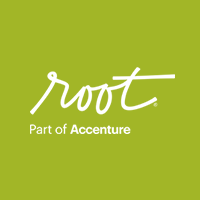My days often consist of a visit to a client’s office. A strategy meeting is underway and the room is filled with fervor and possibility. HR folks, the CEO, and an array of other leaders are poised to discuss a very important topic – change. More specifically, how to effectively engage their company emotionally so they can understand why they need to start doing things differently. The natural solution chosen? A story. Excellent! A story is the perfect medium to present this type of information in an emotionally evocative fashion that, when done right, is relatable. After all, if you want people to embrace change, you’d better tap into their emotions!
I enter the room on cue and begin my tried-and-true explanation of an effective story. I explain that there is a central character, which could be their company or a metaphorical one, who has a goal. I describe how that central character has conflict. And that’s usually about as far as I get before people start sweating with anxiety. The idea of telling a story about a company that has flaws and conflicts (mirroring the state of their very own company) creates immediate and uncontrollable concerns.
The reactions of the executives vary, but typically include fears that cause people to blurt out statements like:
- “I don’t think we want people to think anything is wrong.”
- “Do you really think it’s wise to say we’re not doing our jobs right? We don’t want to offend them!”
- “I don’t think our folks are ready to hear something like this. I know, we’ll just have our leadership tell them what to do – that’ll work, right?!”
Why Embracing Conflict at Work Makes More Powerful Stories
I imagine I hear a church bell ring and I’m placed in an old western standoff at high noon. The frame narrows and my eyes dart, assessing the room. The meeting has been challenged; they’re reaching for answers, wondering why the hell someone invited me in here to seemingly ruin their otherwise wonderful session.
I then explain a critical part to successful storytelling: “Conflict is the cornerstone of any effective story.”
This is not what they want to hear, because they don’t want to tell their people a story about a conflict at their workplace. But I press on. I urge them to think about their favorite movie. Was there conflict? a bad guy? an opposing force? someone overcoming something? I would bet the budget of that production that there was.
The head of HR begins to loosen the death grip on her ballpoint pen. “I’m listening,” she says, as if watching the first half of a magic trick.
So I continue. I tell them that stories follow an arc, a framework that guides the audience through a series of steps for an earned and justified conclusion. Conflict does a lot.
Conflict Is Relatable
Take Walter White from Breaking Bad. He’s a high school chemistry teacher with a dead-end career and lung cancer, and faces incredible debt for his treatment. Now that’s conflict! As a result of this seemingly insuperable conflict, he chooses to earn wealth by using his talents and knowledge to cook methamphetamine. Now I’m guessing that you, like many of us, have not cooked meth, nor plan to. But everyone at some point in their life has felt trapped or desperate, and with very few options. This feeling is relatable and pulls us in as an audience.
Conflict Is Motivational
You want to get back in the gym and need some motivation. You fire up YouTube and are hit with essentially the same video time after time. A person who faces some pretty insurmountable odds, who is typically overweight, disabled, depressed, or has been told by outside forces that they are doomed to be the way they are. The following montage shows the central character making progress in the face of conflict. Lunges, pushups, yoga, diet, a super-sweet cinematic epic soundtrack, all culminating in a picture at the end that shows a side-by-side before and after. Conflict and resolution. You were right there with them! You wipe away your single tear and immediately order workout shoes on Amazon.
Conflict Is Memorable
Having bested conflict is often a badge of honor. From Tough Mudders to surviving cancer to passing the bar exam, once we overcome a conflict, we celebrate. After all, overcoming adversity is something to be proud of. In fact, achievements are so often paired with conflict that one simply can’t be talked about without the other.
Think about it. No Olympic medal winner has ever started an interview with, “This was a cinch to get.” They talk about the adversity – the long hours, the hard work, the blood, the sweat, and the tears. Once the medal is around their neck, they celebrate with worldwide acknowledgement that they reached their goals and are forever recorded in history as the best.
Yes, Businesses Have Conflict Too
It sometimes takes me a bit of time before the HR teams and C-suite executives I’m meeting with come to grips with the fact that yes, it’s okay to acknowledge their organization’s conflicts. But if I’ve done my job well, people realize that conflict is relatable, motivational, and memorable. These three qualities make for very powerful stories, and stories are critical to creating engagement at work!
I rarely get a standing ovation at the end of a meeting, but I walk out knowing I’ve helped the executives become more powerful and effective storytellers who understand the benefits to admitting that conflict exists at their workplace. And once this is happens, their ability to create a story that can effectively motivate, inspire, and live on in the hearts of your people becomes a very attainable reality.





